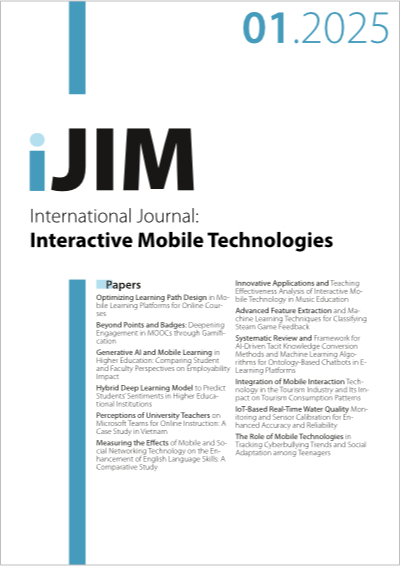Innovative Applications and Teaching Effectiveness Analysis of Interactive Mobile Technology in Music Education
DOI:
https://doi.org/10.3991/ijim.v19i01.53497Keywords:
interactive mobile technology, music education, teaching effectiveness, temporal characteristics, teaching evolution, network characteristicsAbstract
With the rapid advancement of mobile Internet technology, the application of interactive mobile technology in education has emerged as a significant area of research, particularly in music education. Mobile technology has introduced transformative changes to both learning styles and teaching methods. Through the utilization of smart devices and mobile platforms, students are provided with personalized and flexible learning environments for music education, while teachers can leverage advanced technological tools to enhance teaching effectiveness. Although previous studies have examined the role of mobile technology in music education, most have focused on its isolated effects, neglecting a systematic analysis of the evolution of teaching effectiveness over time. Furthermore, existing methodologies often fail to account for temporal characteristics and dynamic changes, resulting in an incomplete evaluation of long-term educational outcomes. This study aims to analyze the network characteristics of interactive mobile technology applied in music education and to explore the evolution of teaching effectiveness with consideration of temporal characteristics. This study is expected to offer novel theoretical perspectives for the digital transformation of music education along with practical guidance for its implementation.
Downloads
Published
How to Cite
Issue
Section
License
Copyright (c) 2024 Nan Zhang (Submitter); Na Sun, Yingran Zang

This work is licensed under a Creative Commons Attribution 4.0 International License.



